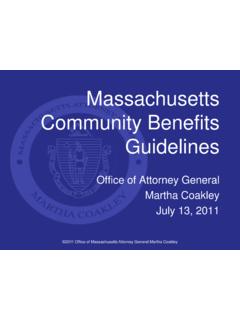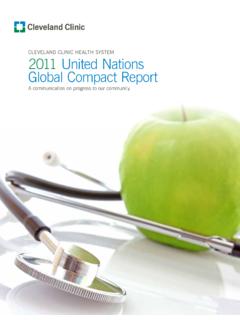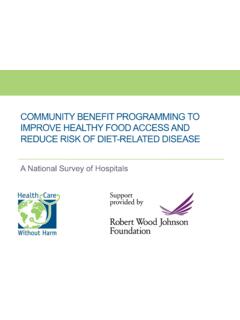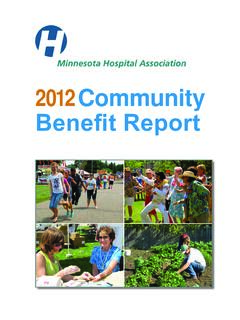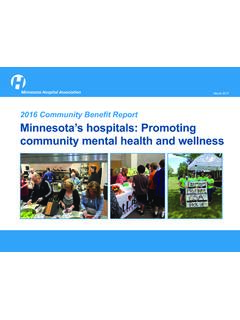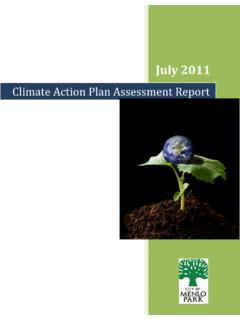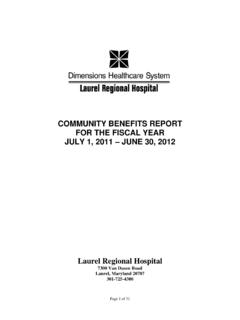Transcription of Community Benefits - prp.gov.wales
1 Community Benefits Delivering Maximum Value for the Welsh Pound 2014. Print ISBN 978 1 4734 1846 2. Digital ISBN 978 1 4734 1847 9. Crown copyright 2014. WG19501692. Community Benefits Delivering Maximum Value for the Welsh Pound This Guide offers advice on how to incorporate Community Benefits in public procurements using either the Open or Restricted procurement procedures. Although not covered in this guidance it is also possible to include Community Benefit requirements when using the Competitive Dialogue procedure which offers greater scope for discussions around the requirement and could include what is possible with regards to Community Benefits . However it should be noted that the use of the Competitive Dialogue procedure is limited to particularly complex contracts where it is difficult either to specify the requirement or the legal / financial make-up of the project and where the Contracting body considers the use of the Open or Restricted procedures will not allow for the award of the The guide explains how Community Benefits as either Core or Non-Core requirements can be legitimately incorporated into contracts and framework agreements within the policy and legal framework governing public procurement.
2 While the use of these Community Benefits approaches offer some scope for innovation the requirements to act in accordance with the Core principles of transparency, equality and Non- discrimination set out in the Public Contracts Regulations still apply. It is also worth noting that this guidance deals specifically with the application of Community Benefits / social requirements' in public sector procurement. However, good procurement practice encompasses many other issues and further guidance is available on the Value Wales Procurement Route Planner 1. OGC / Her Majesty's Treasury Guidance on Competitive Dialogue 2008. Minister's foreword In Wales we spend over billion annually on the procurement of external goods and services across the public sector. As Minister for Finance I want to ensure that we spend that money wisely and maximise the Benefits we get from the Welsh pound to build a stronger economy, promote jobs and tackle poverty in Wales.
3 The Wales Procurement Policy Statement that I issued in December 2012 set a clear definition of value for money in Wales, taking a holistic view of public procurement as a driver of social, economic and environmental Benefits . Community Benefits is a requirement of the Policy statement and a principle in its own right, reinforcing its importance. I have made it clear that adoption of the Policy Statement is not optional, I will be closely monitoring progress and will consider legislation if necessary. We have made huge progress since the publication of the first Community Benefits Guidance in 2010. Results from the first 35 projects worth 465m show that 85% has been re-invested in Wales 124m directly on salaries to Welsh citizens, and 277m with Wales-based businesses, 80% of which were Welsh SMEs. Some 562. disadvantaged people have been helped into employment, receiving over 15,460 weeks of training. This illustrates how applying the Community Benefits policy is making a significant contribution to the Welsh Government's ambitions for jobs, growth and Tackling Poverty in Wales.
4 I am delighted that the success of our Community Benefits work has been recognised at a national level, winning the Civil Service Procurement Award in 2012. To strengthen and steer the Community Benefits policy, I established a Task &. Finish Group in autumn 2012. The group set themselves three clear objectives . to strengthen policy, support implementation and challenge application. I am grateful to Martin Mansfield for having chaired this Group and to the other members who contributed to the delivery of its objectives. Delivery of the agreed milestones has enabled the Welsh Government and wider public sector to fully embed Community Benefits , laying a strong foundation for the future. It is particularly important that our investment through the Wales Infrastructure Investment Plan continues to maximise the value for the citizens of Wales. We have shown that good public procurement can drive efficiencies and make an enormous difference to the social, economic and environmental well being of Wales.
5 Providing opportunities for employment and training to disadvantaged individuals not only transforms their lives but can also have a positive affect on their families and particularly children, as well as the wider Community . I therefore urge you to utilise this updated and revised guide to assist you in building Community Benefits into your tendering processes and measure the outcomes through completion of the Measurement Tool. I have been delighted to see at first hand the positive impact that Community Benefits is having on the people and communities of Wales. To continue and build upon that success, the policy must be an integral part of all procurement planning and decision making and applied across the public sector in Wales. I look forward to building on our achievements to date and know that we can make an even bigger difference by taking a collective approach and applying this policy consistently and effectively. Jane Hutt AM.
6 Minister for Finance Contents Foreword 4. 1. Introduction (i) Purpose of this guidance 9. (ii) Background 9. (iii) Context for Community Benefits 10. (iv) Community Benefits contribution to Sustainable Development 11. (v) Community Benefits contribution to Tackling Poverty in Wales 13. 2. Defining Community Benefits ' (i) Workforce initiatives Targeted recruitment and training 14. (ii) Supply chain initiatives 15. Meet the Buyer Events or Meet the Contractor Events 16. Buyer Contractor sub-contract notice facility 16. (iii) Community initiatives 17. (iv) Educational initiatives 17. (v) Environmental initiatives 18. (vi) Equality and Diversity 19. (vii) The menu' of Community Benefits 19. 3. What could we achieve, what should we focus on? (i) What issues should we focus on? 21. (ii) Defining disadvantaged' 22. Disadvantaged worker' 22. Severely disadvantaged worker' 22. Disabled worker' 22. (iii) What activities will the project / contract generate?
7 23. (iv) General principles 23. Client driven 23. Citizen's voice 23. Working in partnership 24. The role of the contractor / supplier 24. (v) Community Benefits and the procurement process 24. (vi) Identifying powers' to implement Community Benefits 26. 4. Approaches Core and Non-Core (i) Deciding on which approach to use 28. (ii) Community Benefits Core and Non-Core decision flow chart 28. (iii) The Core approach 31. (iv) Supplier Selection stage and the Core approach 32. (v) Managing the additional cost of Core Community Benefits 33. (vi) The Non-Core approach 34. Community Benefit proposals 34. Contract Conditions 34. Structuring Non-Core Community Benefits proposals 35. (vii) Managing the additional cost of Non-Core Community Benefits 36. 5. Community Benefits in the Contract Notice (i) Contract Notice Commodity Categories (CPV codes) 37. (ii) Contract Notice Community Benefits Clauses page 38. 6. Support Services 41 to 56. (i) The role of Support Services' (ii) Job Centre Plus (iii) Construction Industry Training Board (CITB).
8 (iv) Shared Apprenticeship Schemes South West Wales Regional Shared Apprenticeship Ltd (SWWRSAL) . Cyfle Building Skills Y Prentis North Wales Share Apprenticeship Scheme (v) Constructing Excellence (vi) Careers Wales (vii) DWP Work Programme providers Working Links Rehab JobFit (viii) Business Wales (ix) Business Skills Hotline (x) Ensuring fair and prompt payment Wales Fair Payment Guidance Project Bank Accounts (xi) Ensuring opportunities are visible to Wales based businesses Buyer Contractor Sub-Contract Notices (xii) Numeracy Employer Engagement Programme 7. Other resources (i) The CITB Client-Based Approach (CBA) to developing and implementing and Employment and Skills Strategy on construction projects in Wales. 57. (ii) Can Do Toolkit 58. (iii) Social Engagement Planning Tool 58. 8. Case Studies Community Benefits in Action (i) Taf Ely Campus, Coleg Morgannwg, Laing O'Rourke 59. (ii) Arbed II Welsh Government, Melin Homes 61.
9 (iii) 4 Primaries Project, Powys CC, Wilmott Dixon 62. (iv) Blaenavon Community Campus, Blaenavon, Torfaen 63. 9. The Community Benefits Measurement Tool (i) Background to the Community Benefits Measurement Tool 65. (ii) How to use the Measurement Tool 66. (iii) Completing the Community Benefits Measurement Tool (CBMT) 66. (iv) Who should complete the tool? 68. (v) What period should completed tools cover? 69. (vi) Which version of the measurement tool should I use? 69. 10: Further advice or guidance 70. 11. Frequently Asked Questions 71 to 95. Annex 1: Core approach Step-by-step guide Annex 2: Non-Core approach Step-by-step guide Annex 3: Sample Clauses Section 1: Introduction 1.(i) Purpose of this guidance This guide is for all those involved in delivering Community Benefits to provide support to work through the issues that need to be considered and identify actions that need to be taken to ensure appropriate Community Benefit objectives are identified and outcomes delivered.
10 1.(ii) Background When taken as a whole, the Welsh public sector is the largest user of goods and services from both the private and voluntary sectors in Wales. For this reason, Procurement is viewed as a key driver for delivering the Welsh Government's Sustainable Development commitments for Wales. Initially piloted in 2003 and having steadily grown in importance since then, the inclusion of Community Benefits ' or social requirements'1 in public sector procurement, to ensure wider social and economic issues are taken into account when planning and tendering for construction, service or supplies contracts has never been more important. Acknowledged in the McClelland Review, Maximising the Impact of Welsh Procurement Policy' August 2012 and at the UK national level as the winner of the UK Civil Service Procurement Award 2012, the Welsh Government's Community Benefits Policy has been recognised as an excellent example of innovative procurement in practice that is already delivering significant Benefits across Wales.
